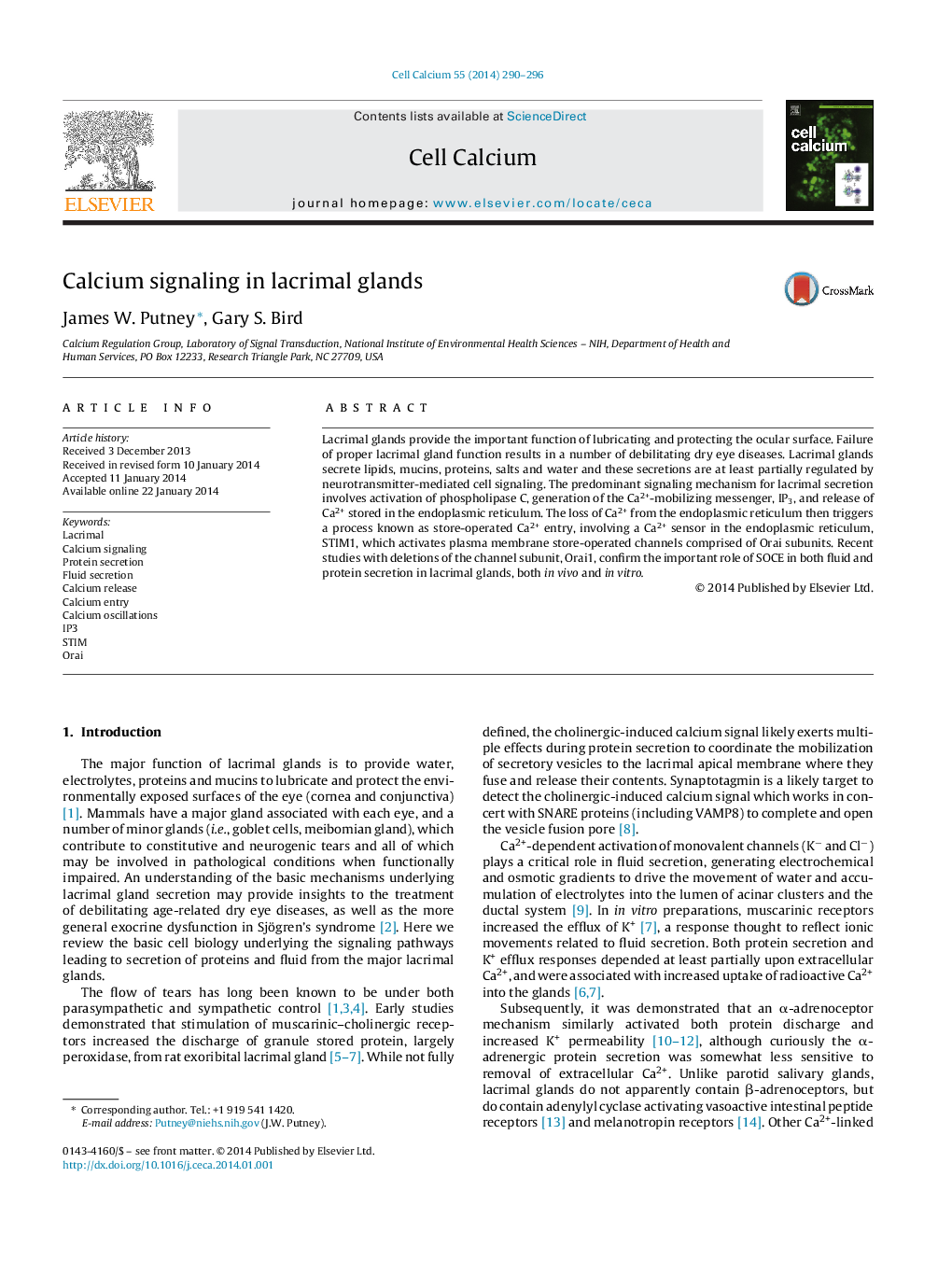| Article ID | Journal | Published Year | Pages | File Type |
|---|---|---|---|---|
| 2166045 | Cell Calcium | 2014 | 7 Pages |
Lacrimal glands provide the important function of lubricating and protecting the ocular surface. Failure of proper lacrimal gland function results in a number of debilitating dry eye diseases. Lacrimal glands secrete lipids, mucins, proteins, salts and water and these secretions are at least partially regulated by neurotransmitter-mediated cell signaling. The predominant signaling mechanism for lacrimal secretion involves activation of phospholipase C, generation of the Ca2+-mobilizing messenger, IP3, and release of Ca2+ stored in the endoplasmic reticulum. The loss of Ca2+ from the endoplasmic reticulum then triggers a process known as store-operated Ca2+ entry, involving a Ca2+ sensor in the endoplasmic reticulum, STIM1, which activates plasma membrane store-operated channels comprised of Orai subunits. Recent studies with deletions of the channel subunit, Orai1, confirm the important role of SOCE in both fluid and protein secretion in lacrimal glands, both in vivo and in vitro.
